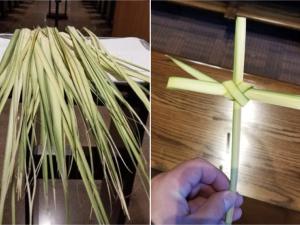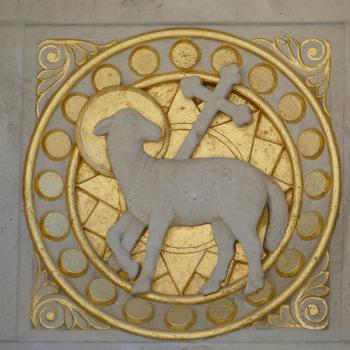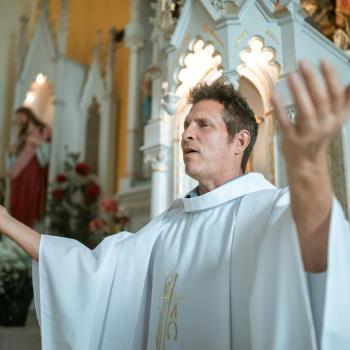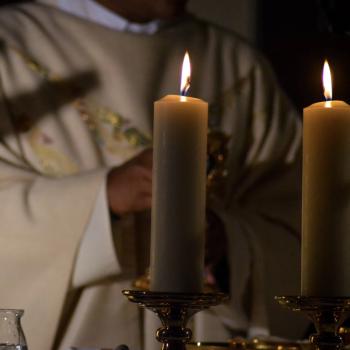
Palm Sunday Mass is one of the most intense liturgies the Catholic Church celebrates every year. It makes us relive with Jesus his joy and drama from his glorious entrance to Jerusalem to his death on a cross in Calvary.
After having prepared our hearts from the beginning of Lent on Ash Wednesday and for five weeks with our penance and our works of charity, on Palm Sunday we gather to begin, united with the whole Catholic Church, the annual celebration of the Easter Mystery, that is, the passion and resurrection of our Lord Jesus Christ, mysteries that begin with his entry into Jerusalem, the holy city.
The liturgical name of this day is Palm Sunday of the Passion of the Lord. Through the anamnesis and mimesis of the sacred Liturgy, we remember and relive the entry of Christ, the Lord, into Jerusalem to consummate his Easter Mystery. The anamnesis consists of remembering an event that occurred in the past with the purpose of bringing it to the present. Mimesis consists of mimicking the gestures of a past event to relive them here and now. In this way, this liturgical memorial puts us fully in the joy of the triumphal entry of Jesus into the Holy City, especially when the liturgical celebration begins with a procession (the Missal allows two additional forms of entry: the solemn entry, without procession, inside the church; and the simple entrance in which the Mass begins, practically, as usual).
The entrance to Jerusalem
The anamnesis of the Entrance to Jerusalem is carried out by listening to the reading of the Gospel, which tells us this epic episode of the life of Jesus. In Year A, we hear the story written by Matthew (21:1-11). Jesus tells two of his disciples to go to the town in front of Bethphage and borrow an ass and a colt.
In Year B, we may listen to the account of Mark (11:1-10). He speaks only of a colt and adds that some in that town questioned the two apostles for taking it. We may also hear what John says (12:12-16). In his version, Jesus finds himself an ass and without further ado, he rides it to fulfill the Scriptures. Unlike the other evangelists, John does not detail the fact that the ass was covered with cloaks, which is a gesture reserved for a royal mount.
In Year C, we hear Luke (19:28-40) telling a version very similar to Matthew and Mark, specifying that it was the owners of the colt who questioned the two apostles who borrowed it.
The four evangelists consistently point out that Jesus was acclaimed when He entered Jerusalem, with hosannas and blessings to the King of Israel. Luke adds at the end that the Pharisees reproach Jesus by ordering Him to rebuke his disciples, to which Jesus replies by assuring them that “if they are silent, the stones will speak.”
The mimesis is carried out with the procession of the assembly into the church, each carrying olive branches or palm leaves, which are sprinkled with holy water at the beginning, and chanting songs of acclamation to Christ the King. Just as it happened in Jerusalem that glorious day, each of us feels the branches and palms in our hands, advances among the people and sings acclaiming the Lord, reliving and making present that glorious moment.
The drama of the Passion
A moment of great joy for Christ, his apostles, his disciples and for us, his Church. A joy that will soon be transformed into drama in the same liturgical celebration when the Gospel is proclaimed, which is distinguished from the gospels of the rest of the masses of the liturgical year in special ways:
- No candles or incense are used at the ambo.
- The usual greeting “The Lord be with you… ” is omitted.
- It can be read by three readers, always leaving the priest the words of Christ, or by three deacons.
- Taken from Mt, Mk or Lk depending on the corresponding year, it is the longest Gospel of all the masses of the year. It competes in extension with the Passion according to St. John, but this is proclaimed in the Liturgy of the Passion of the Lord on Good Friday which is not a Mass.
- When we hear that Jesus dies on the cross, we all kneel in silence for a moment.
A dramatic Gospel that confronts us year after year with the injustice of the trials against Jesus, the torture of his flagellation, the torment of his way to Calvary and the martyrdom of his death on the cross. A Gospel that moves even the most insensitive listener and that leaves many with a lump in the throat. The drama of the Passion unfolds, step by step, before us. Our imagination puts us right in front of the Sanhedrin, in the palace of Herod and the praetorium of Pilate, on the side of the road to Calvary and at the foot of the Cross. A Gospel that leaves us speechless and that for that reason, for the only time in the year, the Missal allows instead of a homily to remain silent if the celebrant prefers so.
But what causes that lump in our throat? What is it that leaves us speechless every year? The horror of the passion of Christ or the shame of knowing that although He has died for us, we have not been able to respond faithfully to Him? The pain of seeing Him suffer for us or recognizing that we are not worthy of such suffering?
The beginning of Holy Week
Lent is not over yet. Palm Sunday of the Passion of the Lord is, in fact, the sixth Sunday of Lent and with this celebration our Holy Week begins. It is for this moment we have prepared ourselves throughout Lent by praying more intensely, cultivating our generosity increasing our almsgiving and striving to keep the fast we traditionally observe. This week, Christ will institute the Eucharist and the priesthood on Holy Thursday, He will die for our salvation on Good Friday, from his grave He will descend to hell on Holy Saturday and will rise with all his glory on Easter Sunday. The mystery of redemption is about to be consummated and Christ invites us to witness his infinite love, living these sacred mysteries by his side.
This is my first column writing for Patheos. I appreciate the opportunity to join its team of contributors and thank the readers who have given me their confidence by reading these first lines.

















